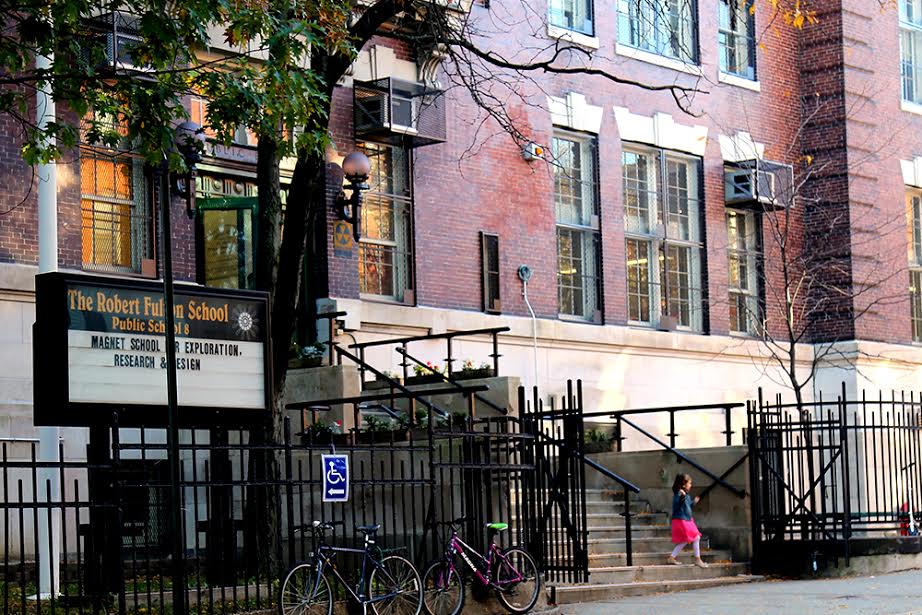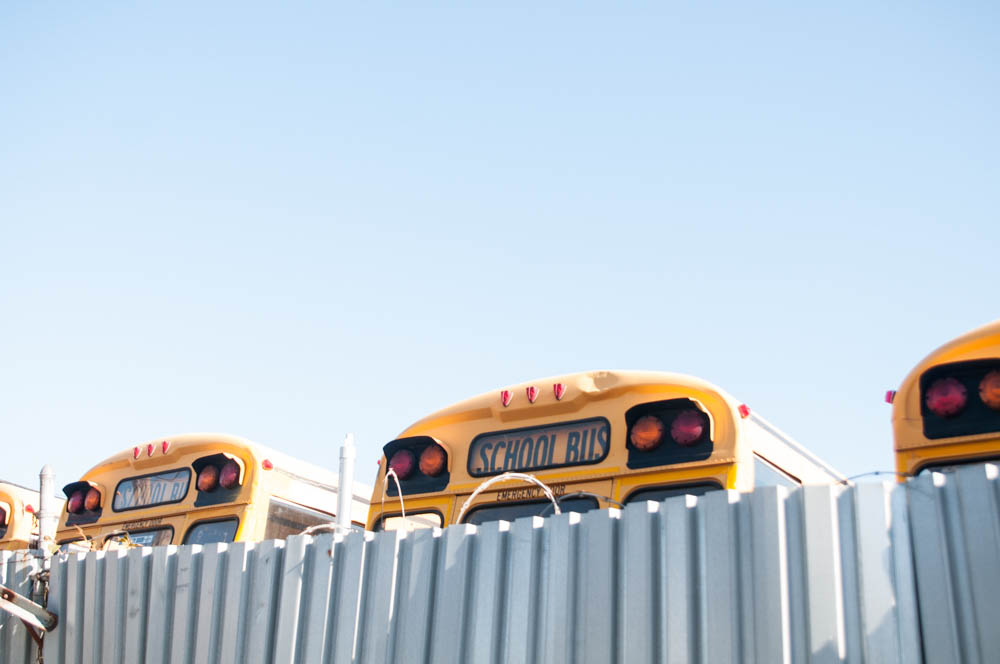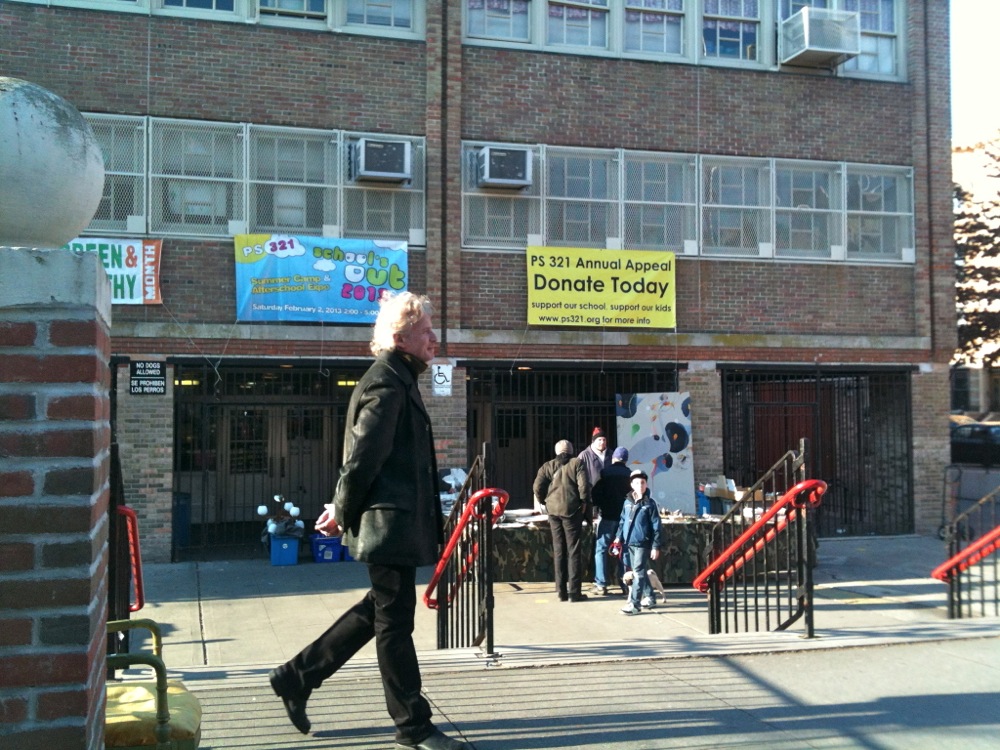Brooklyn Schools 101: How to Get Into the Public Elementary School of Your Choice
School applications. Ugh. Cue backstabbing, pushy parents hiring tutors to get their 3-year-olds into the “right” private preschools so that one day they may be accepted into Harvard. But it’s really not that bad, at least not in Brooklyn. There are a number of strong public schools in New York City — many of them better…

School applications. Ugh. Cue backstabbing, pushy parents hiring tutors to get their 3-year-olds into the “right” private preschools so that one day they may be accepted into Harvard. But it’s really not that bad, at least not in Brooklyn.
There are a number of strong public schools in New York City — many of them better than private schools elsewhere in the country. And one perk of city life, as opposed to the suburbs, is your kid has at least some opportunity to attend almost any one.
In other words, there’s a lot of choice. But so much choice can also be daunting.
Here is Brownstoner’s step-by-step guide to finding and getting into the public elementary school of your choosing.

Photo by Barbara Eldredge
Plan Ahead
To enroll your child in public elementary school in Brooklyn, you must apply. If you apply in time for kindergarten, you’ll have the best chance of getting your child into the school of your choice because the classes have the most open spots at that time — they are all open.
(Incidentally, if your child is planning to attend pre-k, you must also apply to that, but it doesn’t stick. You still have to apply to kindergarten.)
Parents should start making plans at least a year in advance. A child is eligible to attend kindergarten the year he or she turns 5. Applications are due the winter before.
So, for example, if your child turns 5 in January 2016, he or she will start kindergarten in September 2016. The application is due January 15. But you need to start planning now.
Find Your Zone and District
A zone is the geographical area whose residents may attend the school. A district is larger than a zone. Districts encompass several neighborhoods and many schools. If your zoned school is overcrowded, you may be put on a waiting list. But generally, children in the zone are given priority over others.
Not all schools have a zone. The Earth School on the Lower East Side, for example, is not zoned, so it gives equal weight to children who apply to it from the entire district. District 1 and 7 in Manhattan and District 23 in East New York are choice districts, which means there are no zoned schools.
Children who apply to a school inside their district may also be given priority over others who apply from outside the district.
You will find your zone and district using the Department of Education’s search tool.
Visit Potential Schools
Schools throughout the city hold tours and open houses at various times throughout the year. November and December are common times to visit, in preparation for the January 15 application deadline.
Research Schools
The DOE offers kindergarten information sessions about the process in December. Read more about it on the DOE website.
For more information about which schools to apply to, consult the DOE’s kindergarten directory.
More information may also be found at nonprofit Insideschools. This online guide features information about every public school in New York City, including stats on attendance and test scores, and parent comments.
You can also hire a school consultant. Some may scoff at the notion, but an expert can help parents sort through overwhelming amounts of information quickly.
Consultants look for schools that are changing and have space but are not already so well known they are overcrowded and already have wait lists of students in zone.
A consultant will match you up with a list of five or six schools that meet your particular needs and where you are likely to get in.

Photo by Mary Hautman
What to Look for in a School
Test scores are important, but they don’t tell the whole story. A convenient location, a school that “feels” right, or special programs may also be important.
Some schools have Gifted & Talented programs, dual-language programs or other unusual offerings, such as courses in robotics.
Pay special attention to schools that have lots of fun books, not just textbooks, displays of artwork created by students, visible samples of student writing even in low grades, and evidence of hands-on learning such as pets and plants, according to Insideschools.
Parents should also consider the principal: A good leader can turn around a troubled school and a poor one can harm a school, according to Insideschools.
Apply for Schools
Once you have selected your top choices, you can apply online, by phone or in person. To apply online, you fill out one application online at the Department of Education’s Student Enrollment Management System. You may list as many as 12 schools, in order of preference.
To apply in person, go to a Family Welcome Center. There are four in Brooklyn. You will find the addresses on the DOE website.
To apply by telephone, call (718) 935-2400.

The much-vaunted P.S. 321 in Park Slope. Photo by Cate Corcoran
Wait for the Results
You will get your answer in March. If you are waitlisted, you may find out you got in as late as September — or even October, after school has already started.
“All the in-district kids have to be accepted and then bail and go elsewhere throughout the summer before we have a shot at getting in which usually takes until September or October — that’s how long kids are trading up to better schools as spaces open up,” said a Brownstoner reader.
Lobby for Acceptance
If you are waitlisted, you can lobby the principal at your top school or schools to accept you.
One Brownstoner reader who lives in Bed Stuy met with a consultant and applied to 12 schools. All were out of district, and the child was waitlisted at every one.
The parents set up meetings with the principals at the two or three schools highest on their wish list. Finally, in August, they were accepted at their top school.
Accept and Register
If you are accepted, you must register or you will lost your spot. To register, you go to the school in person.
If you accept, you will remain on the waitlist for any school you listed as a higher choice.
[Top photo: Barbara Eldredge]
Related Stories
Cobble Hill, Carroll Gardens Parents to Discuss Overcrowding in Public Elementary Schools
How Do Brooklyn Elementary Schools Measure Up? Sunset Park School Tops City Math Scores
Borough President Adams Announces More Than $13 Million for Brooklyn Schools





They do. Tons of kids from the co-ops go to 11. PS 20 took a real blow to its development when the co-location of A&L went through. But yes, its boundaries are weird. There’s even a section across Atlantic that’s zoned for 11 (I think that new building across from barclay’s is zoned for 11?), and areas 2 blocks away from the school that are not.
The annoying thing about zones is that the South Campus of the Clinton Hill Co-Ops is directly across the street from PS 11 but is zoned for PS 20, half a mile away and not as well-regarded. At least I’ve heard PS 11 generally accepts non-zoned but in-district applicants.
I did this, not with 38, but I would also play devil’s advocate. People are very quick to dismiss a school–any school– based on somewhat nebulous criteria. If you can find a school where your kid is happy they will learn. Our first experience in DC was with a top-rated school here. And our kid was miserable. The rich kids who were her classmates were… Not nice. The charter we moved her to is so much better. And I am shocked to be a charter advocate. But there’s a lot that’s not about testing numbers or demographics.
You are not wrong. But do consultants help when the median price of a brownstone passes 2mm? Doesn’t that just make the school “flip” faster, which actually hurts the kids who are there by benefit of rent control and stabilization and living in the neighborhood for generations more?
Or don’t they just make those same parents avoid the neighborhood school for intangible because poor kid reasons? I am no expert, but on paper 56 and 3 aren’t so different than 11. Except that all the parents I know in their zones choose 11. Since 11 is amazing, I do not blame them. But really, if you invest in a neighborhood, invest in it.
Here’s the exception. If you are zoned for a very good PS that does not have a G&T program but your kid gets a top score on the G&T test, still better to stick with your locally zoned school over putting your kids in a lesser school with a G&T program. The G&T programs are put in schools to increase test scores and parent involvement. Example, PS 38 nestled in prime real estate has a G&T program filled with out of zone kids because many locally zoned families are aware of the inadequate Principal but out of zone parents are not. This is a case when it would be better to stick with your locally zone school over an out of zone G&T program such as PS38.
My children who are now in college attended 261. It was an excellent experience.
Good luck!
Slots for g and t are also very limited. You’re not going to get into a citywide without a 99, and you’re not going to get into one of the more in demand classes at a local school with much under that either.
Some schools that don’t have any g and t classes do some differentiated learning tracking. We ended up choosing that instead. There are pros and cons to both.
Thanks halvewit, great info. Good luck on the January test!
PS 11 has a winning robotics team too, I think. And a robotics science teacher (one of two excellent science teachers) that we miss terribly.
I have a sinking feeling it is also on the list that people who live in bed stuy and hire consultants to find a school apply to. Now. Still, it is also one of the more integrated schools–with kids from pretty much everywhere.